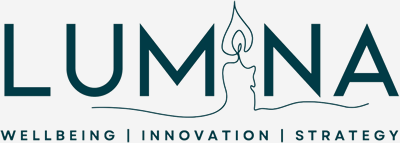Last week while I went on my daily walk as part of my ongoing Long COVID recovery, I had the opportunity to stumble across a podcast on Leaderfulness. It is a concept that, to my surprise, I had forgotten. I found the experience to be very moving and I’ve been thinking about it a lot since.
The term “leaderful” is a relatively new concept that challenges traditional notions of leadership. Rather than emphasizing the role of a single person in leading a group, being leaderful acknowledges that leadership can come from anyone within a group, based on their skills, knowledge, and experience. This approach empowers individuals to take ownership of their work and collaborate with their team members to achieve their common goals.
Being leaderful is rooted in the idea of shared leadership, which has been gaining popularity in recent years. Shared leadership recognizes that effective leadership is not solely dependent on an individual, but rather on the ability of team members to work together and contribute their best in their respective areas of expertise. In this model of leadership, everyone is encouraged to lead where they can add value, and the focus is on developing and empowering team members to contribute effectively.
The concept of being leaderful is also closely connected to the idea of distributed leadership. Distributed leadership is similar to shared leadership, except that it emphasizes the distribution of leadership roles across a group. This approach recognizes that leadership is not limited to a single position, but rather a collective responsibility for achieving organizational goals.
Traditionally, organizations and groups have often leaned towards having a sole leader at the helm. This leader, typically, would make the decisions, set the goals, and guide the direction of the team. However, as work environments become more complex and diverse, the traditional model of leadership often falls short in harnessing the collective intelligence and strengths of the team.
To understand and practice being leaderful, one must develop a set of skills and traits that are necessary for success. These include effective communication, deep listening, critical thinking, empathy, adaptability, and the ability to collaborate with others. Being leaderful requires the ability to identify opportunities and challenges, develop a vision that aligns with the team, and empower team members to take action towards achieving that vision.
In essence, a leaderful approach promotes inclusivity, resilience, and agility. When multiple members of a team can step up and lead in their unique ways, the team becomes more adaptable to change and can navigate challenges more efficiently.
If you are interested in learning more about being leaderful, there are many resources available that can help you develop your skills and knowledge. Here are a few of my recommendations:
“Leadership without Easy Answers” by Ronald A. Heifetz. “The Five Practices of Exemplary Leadership” by James M. Kouzes and Barry Z. Posner. “Turn the Ship Around!” by L. David Marquet. This book delves into the practice of empowering team members to take leadership roles, thereby ensuring better decision-making at all levels.
Being leaderful is a dynamic approach to leadership that empowers individuals to take ownership of their work and collaborate with others to achieve their goals. Effective communication, deep listening, critical thinking, empathy, adaptability, and collaboration are all essential skills for being leaderful.
True wisdom lies in each individual contributing their unique passions and ideas while being open and receptive to the input of others. By showcasing your specific gifts and actively listening to the offerings of those around you, you embody leadership and enable a successful community built on mutual respect and service. Have you come across being leaderful in your place? Is it effective? I would love to hear about your experiences, and how the practice has influenced team dynamics and outcomes.
Embracing leaderfulness not only allows teams to operate at their full potential but also nurtures a culture of respect, understanding, and innovation. As organizations continue to evolve, I believe this approach to leadership will become increasingly crucial.
